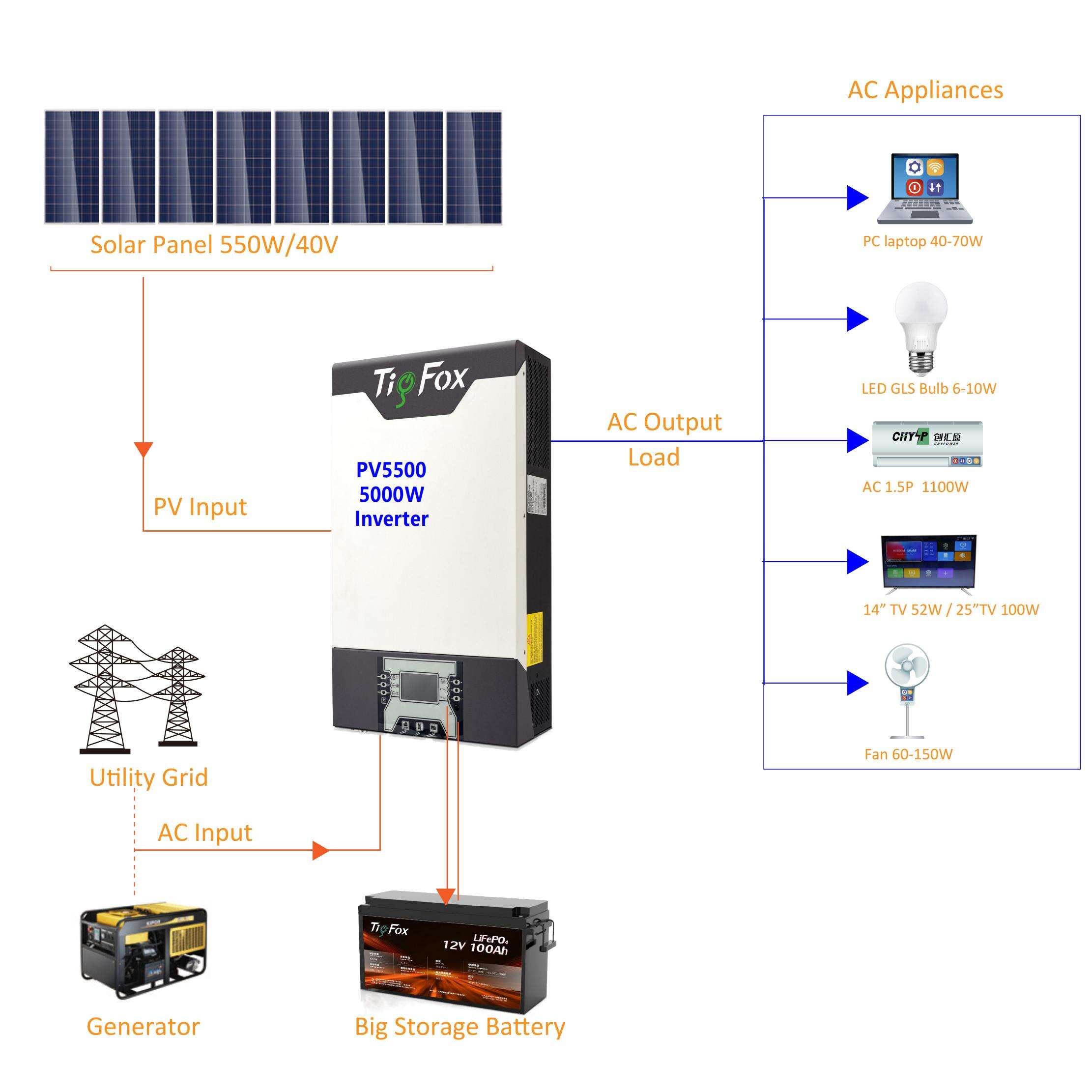What's off-grid solar PV (photovoltaic) systems
Brief Introduction
Off-grid solar power generation system generally consists of a photovoltaic array composed of solar cell components, a solar charge and discharge controller, a battery pack, an off-grid inverter, a DC load and an AC load, etc. The photovoltaic square array converts solar energy into electrical energy under the condition of light, supplies power to the load through the solar charge and discharge controller, and charges the battery pack at the same time; when there is no light, the battery pack supplies power to the DC load through the solar charge and discharge controller. At the same time, the battery should directly supply power to the independent inverter, which will be converted into AC power through the independent inverter to supply power to the AC load.
Contact us to get the solar system for your projects.
Setting Factors
Factors to be considered in the design of solar power generation systems:
1. Where is the solar power system used? How is the solar radiation in the area?
2. What is the load power of the system?
3. What is the output voltage of the system, DC or AC?
4. How many hours does the system need to work every day?
5. If there is rainy weather without sunlight, how many days does the system need to supply power continuously?
6. The condition of the load, purely resistive, capacitive or inductive, what is the starting current?
System Composition
- Solar cell module
According to the different requirements of users for power and voltage, the solar cell modules can be used individually, or several solar cell modules can be connected in series (to meet the voltage requirements) and in parallel (to meet the current requirements) to form a power supply array to provide greater power. Solar cell modules have the characteristics of high area specific power, long life and high reliability. During the 20-year service life, the output power decline generally does not exceed 20%. As the temperature changes, the current, voltage, and power of the battery components will also change, so the negative temperature coefficient of voltage must be considered when designing components in series.
- Solar charge and discharge controller
The solar charge and discharge controller is also called "photovoltaic controller". In places with large temperature differences, the photovoltaic controller should have the function of temperature compensation. Configure a suitable photovoltaic controller according to the DC voltage level of the system and the power of the solar cell module. Common photovoltaic controllers have different voltage levels of DC12V, 24V, 48V, 110V, and 220V.
- solar Battery pack
Its main task is to store energy in order to ensure load power consumption at night or in rainy days. The number of series and parallel connections of batteries can be configured according to the requirements of the DC voltage level of the system. When batteries are connected in series and parallel, the principles of the same model, specification, same manufacturer, same batch, and simultaneous installation and use should be followed.
Contact us to get the right batteries for your system
- Off-grid inverter
The off-grid inverter is one of the core components of the off-grid solar power generation system, which is responsible for converting DC power into AC power for AC loads. In order to improve the overall performance of the photovoltaic power generation system and ensure the long-term stable operation of the power station, the performance index of the inverter is very important. The type of inverter is selected according to the characteristics of the load (such as resistive, inductive or capacitive) and the power of the load.
Contact us to get the right solar inverter
Advantage
Compared with commonly used thermal power generation systems, the advantages of solar photovoltaic power generation are mainly reflected in:
- No risk of depletion;
- Safe and reliable, no noise, no pollution discharge, clean (no pollution);
- It is not limited by the geographical distribution of resources, and can take advantage of the advantages of building roofs;
- On-site power generation and power supply can be generated without consuming fuel and erecting transmission lines;
- High energy quality;
- The construction period is short, and the time spent in obtaining energy is short.
Applications
- Small power supply ranging from 10-100W, such as lighting, TV, tape recorders, etc.;
- 3 - 15KW home roof grid-connected power generation system;
- Photovoltaic water pump;
- Rural carrier telephone photovoltaic system;
- Small communication machine;
- GPS power supply for soldiers;
- Emergency power supplies;
- Photovoltaic power station: 10KW-50MW independent photovoltaic power station;
 EN
EN
 FR
FR
 JA
JA
 RU
RU
 ES
ES

